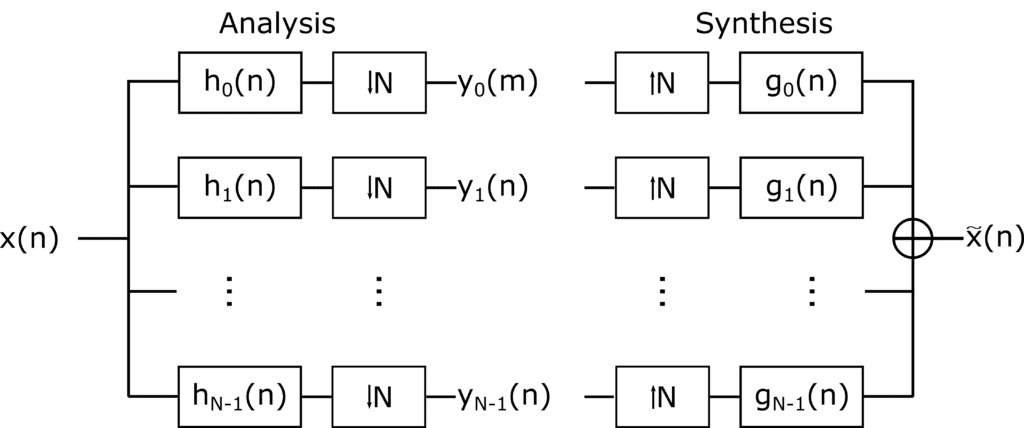Audio coding is a process that aims to optimally compress a signal while still providing good quality audio playback. The process encompasses encoding, entropy coding, decoding, psychoacoustic modeling, and other operations to ensure adequate audio. Here, we will investigate the filter bank and its relationship with audio coding.

A filter bank is a set of bandpass filters with uniform or nonuniformly separated subbands. It is utilized in both the encoding and decoding processes. Through the encoding process, the acoustic signal is filtered into subbands employing the analysis filter bank. Conversely, during decompression, the inverse function of the filter, the synthesis filter bank, is used to reconstruct the subband samples to the original signal.
For a successfully designed filter bank, the filters should apply critical sampling, subband variability, and limited frequency redundancy. The critical sampling determines both the decimator and interpolator factors; each factor equals the number of subbands. This allows the number of samples to be constant during the coding process. Variability of subbands is crucial in changing between stationary and non-stationary signals. Transients within the acoustic signal require higher time resolution, meaning fewer subbands. A balance between time resolution and frequency resolution is imperative for the successful implementation of the filter bank. The subbands should also limit any frequency redundancies in multiple subbands. High-frequency redundancies use more bits, which limits compression during the audio coding process.